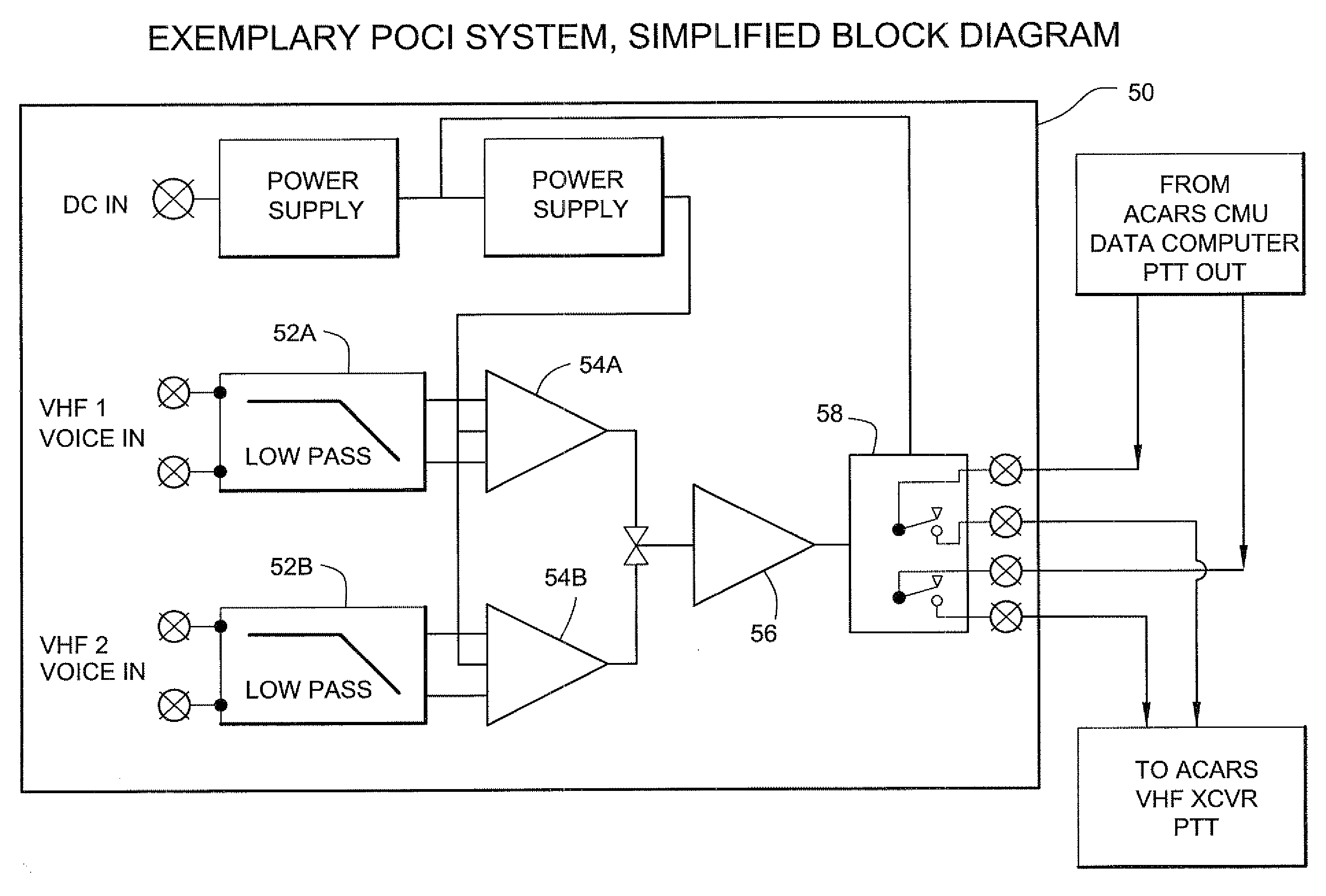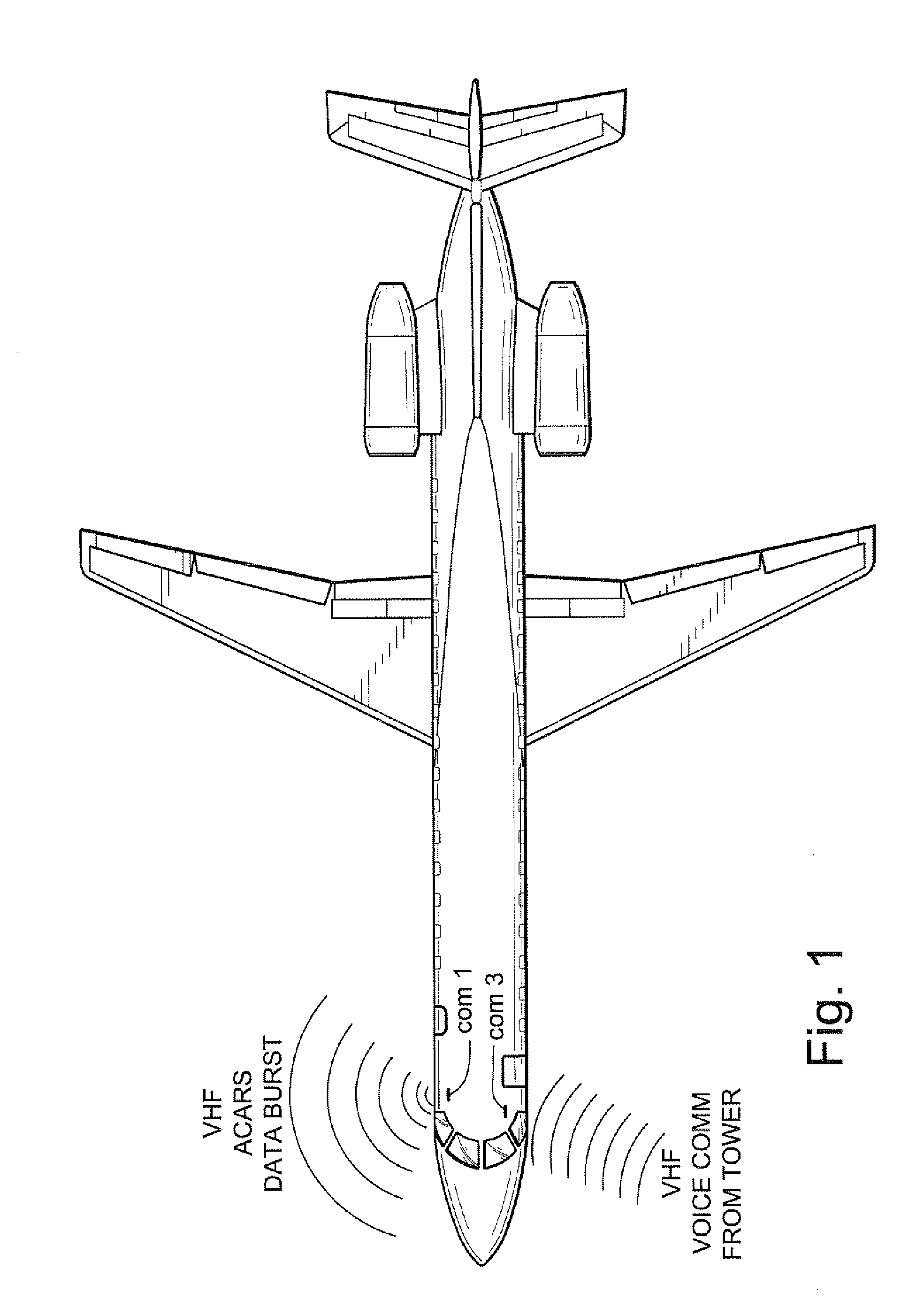Presence of communication interlock method and apparatus for reducing or eliminating aircraft communications radio interference
a communication interlocking and aircraft technology, applied in the field of aircraft onboard radio communication, can solve the problems of affecting the operation of the communication interlocking device, so as to reduce the potential for interference, reduce the interference potential, and increase the physical distance
- Summary
- Abstract
- Description
- Claims
- Application Information
AI Technical Summary
Benefits of technology
Problems solved by technology
Method used
Image
Examples
Embodiment Construction
[0020]The following disclosure provides an exemplary illustrative non-limiting implementation for reducing or eliminating undesirable chirp noise that can be caused by the ACARS system and associated VHF on aircraft communications systems.
[0021]In one exemplary illustrative non-limiting implementation, Comm 1 and Comm 3 antennas are installed on the same side of the aircraft (e.g., top). See FIG. 1. Other installations may for example rely on a minimum antenna separation (e.g., 38 feet) for antennas that are installed on the same side of the aircraft. While other techniques can be used to reduce the splashovers, it is not unusual to continue to get splashover when VHF 1 or VHF 2 operate at close to the frequency of ACARS.
[0022]In one exemplary illustrative non-limiting implementation, a “POCI” (Presence Of Communication Interlock) 50 is provided to prevent the ACARS transmitter from transmitting during times when other radios (e.g., VHF1, VHF2) are actively receiving voice communica...
PUM
 Login to View More
Login to View More Abstract
Description
Claims
Application Information
 Login to View More
Login to View More - R&D
- Intellectual Property
- Life Sciences
- Materials
- Tech Scout
- Unparalleled Data Quality
- Higher Quality Content
- 60% Fewer Hallucinations
Browse by: Latest US Patents, China's latest patents, Technical Efficacy Thesaurus, Application Domain, Technology Topic, Popular Technical Reports.
© 2025 PatSnap. All rights reserved.Legal|Privacy policy|Modern Slavery Act Transparency Statement|Sitemap|About US| Contact US: help@patsnap.com



